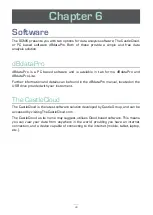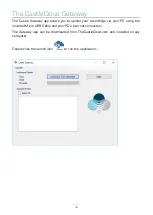
9
Sound Level
–
General Advice
In some environments, high levels of noise can occur. The SONIK sound level meter
models S & SE have therefore been designed for complete accuracy up to sound
levels of 140dB.
Before you record measurements, take the time to ensure you have chosen the
optimum range for the application. Wherever possible, the optimum range is when
the average measured signal is approximately half way between the top of the range
and the bottom of the range without an overload condition.
The SONIK will register an overload if the noise level exceeds the linear operating
range of the range selected by 0.5dB, it is therefore advisable to determine if an
overload will occur on the selected range before measuring. In such cases, you will
need to select a higher range to accommodate the higher peak levels. See
Weightings and Range
for peak range limits on each individual range.
If the noise levels are 0.1dB too low for the range selected, then the meter will display
an under range condition. Under these circumstances, you will need to select a lower
range.
For more detailed information, see
Overload and Under Range
below.
If measuring low level noise, then be aware of the inherent noise levels caused by a
combination of thermal and electrical noise from both the microphone and the sound
level meter. Measuring data that lies within 10dB of the lowest quoted level on the
lowest measuring range may be influenced by the self-noise of the system.















































